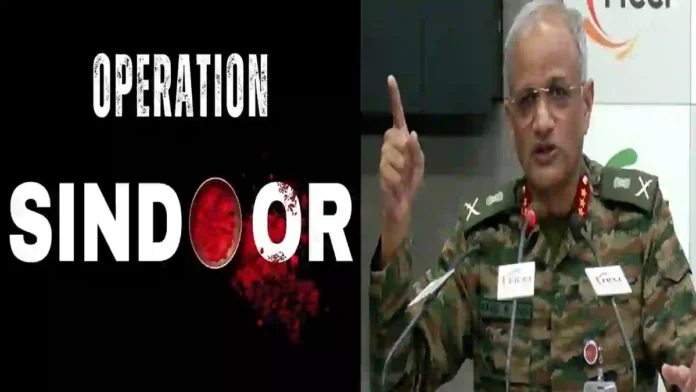Operation Sindoor stands as a pivotal moment in India’s recent military history, offering both reassurance in the nation’s capabilities and a sobering warning about future threats. Lieutenant General Rahul R Singh, Deputy Chief of Army Staff (Capability Development & Sustenance), provided a detailed assessment of the operation and its implications for India’s defence preparedness at a recent FICCI event. ‘India escaped major damage in Operation Sindoor, but army top brass warns: Be ready for next time’s triple threat’ said Deputy Chief of Army Staff (Capability Development & Sustenance), Lieutenant General Rahul R Singh.
Precision Strikes And Tri-Services Integration
The operation was marked by highly precise strikes on terrorist bases across the border. Indian intelligence, leveraging both advanced technology and human sources, identified 21 potential targets. Ultimately, nine were selected for engagement, with the final decision made just hours before the operation commenced. This rapid, data-driven targeting underscored the agility and effectiveness of India’s military planning.
Raed- Pakistan’s Defence Minister Categorically Denies J-35A Stealth Fighter Deal With China
A key feature of Operation Sindoor was its tri-services approach. The Army, Navy, and Air Force operated in close coordination, sending a clear strategic message about India’s integrated military strength. This synergy was crucial in achieving military objectives swiftly and efficiently, while also demonstrating India’s ability to escalate if necessary.
Air Defence: Successes And Urgent Gaps
India’s air defence systems played a decisive role in neutralizing incoming threats, including drones and missiles targeting military installations in northern and western India. The operation showcased the effectiveness of both legacy and indigenous systems, such as the Akash surface-to-air missile and the Integrated Air Command and Control System (IACCS), which provided real-time situational awareness and rapid response capabilities.
Despite these successes, Lt Gen Singh issued a stark warning: while India’s population centers were spared this time, future conflicts may not be so contained. He emphasized the urgent need to further strengthen India’s air defense network, particularly against the evolving threat of drones and precision-guided munitions. The integration of artificial intelligence and enhanced coordination between the Army and Air Force are seen as critical next steps.
Read- India Completes Development of K-5 Nuclear Ballistic Missile To Expand Submarine Strike Range
The Triple Threat: Pakistan, China, And Turkey
Operation Sindoor revealed the complexity of India’s security environment. While Pakistan was the immediate adversary, the conflict exposed a broader axis involving China and Turkey. Lt Gen Singh highlighted that 81% of Pakistan’s military hardware is of Chinese origin, and during the operation, China provided real-time intelligence to Pakistan, including live updates on Indian military deployments. This allowed Pakistan to track Indian movements and adjust its strategy accordingly.
China’s involvement went beyond hardware; it used the conflict as a “live lab” to test its weapons and tactics against Indian systems. Turkey also played a significant role, supplying advanced drones such as the Bayraktar and providing operational support, which added another layer of complexity to the threat matrix.
Strategic Restraint And The Importance of Timing
A defining feature of Operation Sindoor was India’s decision to halt military action after achieving its objectives. Lt Gen Singh described this as a “masterly stroke,” noting that while escalation was possible, restraint prevented a wider and potentially uncontrollable conflict. The operation demonstrated the importance of clear strategic messaging and the value of knowing when to stop—a lesson that will inform India’s approach to future crises.
Read- DRDO’s 30 kW Directed Energy Weapon (DEW) Set For User Trials
Key Takeaways For Future Preparedness
Strengthen Air Defence: India must accelerate the modernization and integration of its air defence systems to protect both military and civilian targets from increasingly sophisticated threats.
Counter The Adversary Nexus: The China-Pakistan-Turkey axis presents a multi-dimensional challenge, requiring enhanced intelligence, surveillance, and countermeasures.
Leverage Technology And Integration: Continued investment in indigenous technology, artificial intelligence, and seamless tri-services coordination will be vital.
Strategic Restraint: The ability to achieve objectives without uncontrolled escalation is a hallmark of mature military leadership.
Operation Sindoor has set a new benchmark for India’s military response, but it also serves as a reminder that the next conflict may be more complex and unforgiving. The lessons learned must drive urgent reforms and investments to ensure India is ready for the “triple threat” that may emerge in the future.
Agencies




